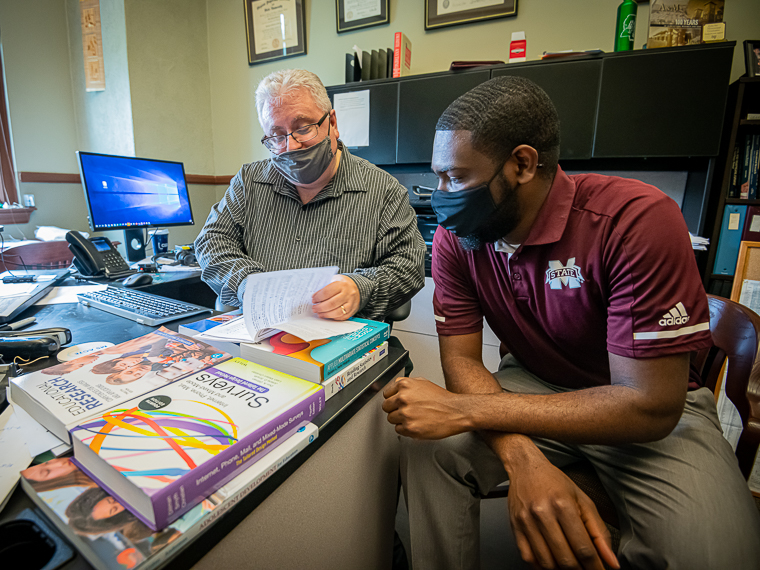The information presented on this page may be dated. It may refer to situations which have changed or people who are no longer affiliated with the university. It is archived as part of Mississippi State University's history.
HOW FARMERS USE PRECISION AGRICULTURE in their operations is the topic of research for Patterson Hilaire, an agricultural and extension education doctoral student in the School of Human Sciences.
Hilaire, a native of the Bahamas, has always had an interest in agriculture, even though his home has a small agricultural footprint, representing only 2.3 percent of GDP for the 700 islands that make up the Caribbean archipelago.
For him, it was his curiosity about how things grew that led him to the U.S., first to the University of Arkansas, where he earned bachelor's and master's degrees in agricultural systems and then to Mississippi State, where in addition to pursuing his Ph.D. in agricultural and extension education, he is also working toward a master's in agronomy.
"My grandfather was a coffee farmer in Haiti," Hilaire said. "I remember stories my mother would tell me about his agricultural pursuits, and it always interested me. My first agricultural class was in junior high and it felt like a natural fit for me. I knew I wanted to pursue an agricultural career."
Now Hilaire is taking that passion to determine how farmers use precision agriculture and better understand their perceptions about the suite of tools designed to help improve yields and profits while decreasing inputs.
Hilaire, and his major professor, Dr. Kirk Swortzel, human sciences professor, have developed two surveys, one for farmers and the other for agricultural retailers, to gage use of precision tools in the field.
In the farmer survey, the pair hope to receive quantitative data, such as the size of the farm, the type of precision agriculture services used, and the year the tools were first implemented. Precision agriculture services, as defined in the survey, are any service that uses electronic information technologies to gather spatial and temporal variability of a field. According to Hilaire, the information will create a baseline for precision agriculture adoption.
"While the concept of precision agriculture has been around for nearly 30 years, we don't have a clear picture of adoption by producers," he said.
The agricultural retail survey asks similar questions on a broader scale such as the total acres precision technologies are applied to each year, and how many people are employed for specific operations, among other questions.
Qualitative data in the survey will include farmer and agricultural retail industry perceptions of precision agricultural technologies. Perceptions can reveal barriers that prevent widespread adoption of the suite of tools available.
As Swortzel explained, this type of data informs teaching, outreach, and research. "If we can identify barriers to adoption, then we can design outreach programs that could remove some of the concerns or anxiety over adoption of these tools," Swortzel said. "Likewise, as we train future agricultural leaders, we can teach them the tools and make the connection between classroom knowledge and real-world applications. Armed with this information, students become ambassadors for precision agriculture in their careers."
The data will also provide statistics that can be revisited to determine how precision agricultural technology tools are adopted over time, Swortzel added.
Hilaire, who plans to graduate in May 2022, plans to teach and research agriculture in his career but he needs help with his research data. COVID-19 prevented face-to-face meetings where Hilaire had hoped to garner responses to his survey. He has moved to postal mail and electronic surveys to get the responses needed to complete his analysis. If you are a farmer or manage an agricultural retail business and would like to participate in the survey, visit https://msudafvm.co1.qualtrics.com/jfe/form/SV_51PF3Z0YuQKiIg5?Q_CHL=qr. For information, contact Patterson Hilaire at 662.325.7696 or pph34@msstate.edu.

